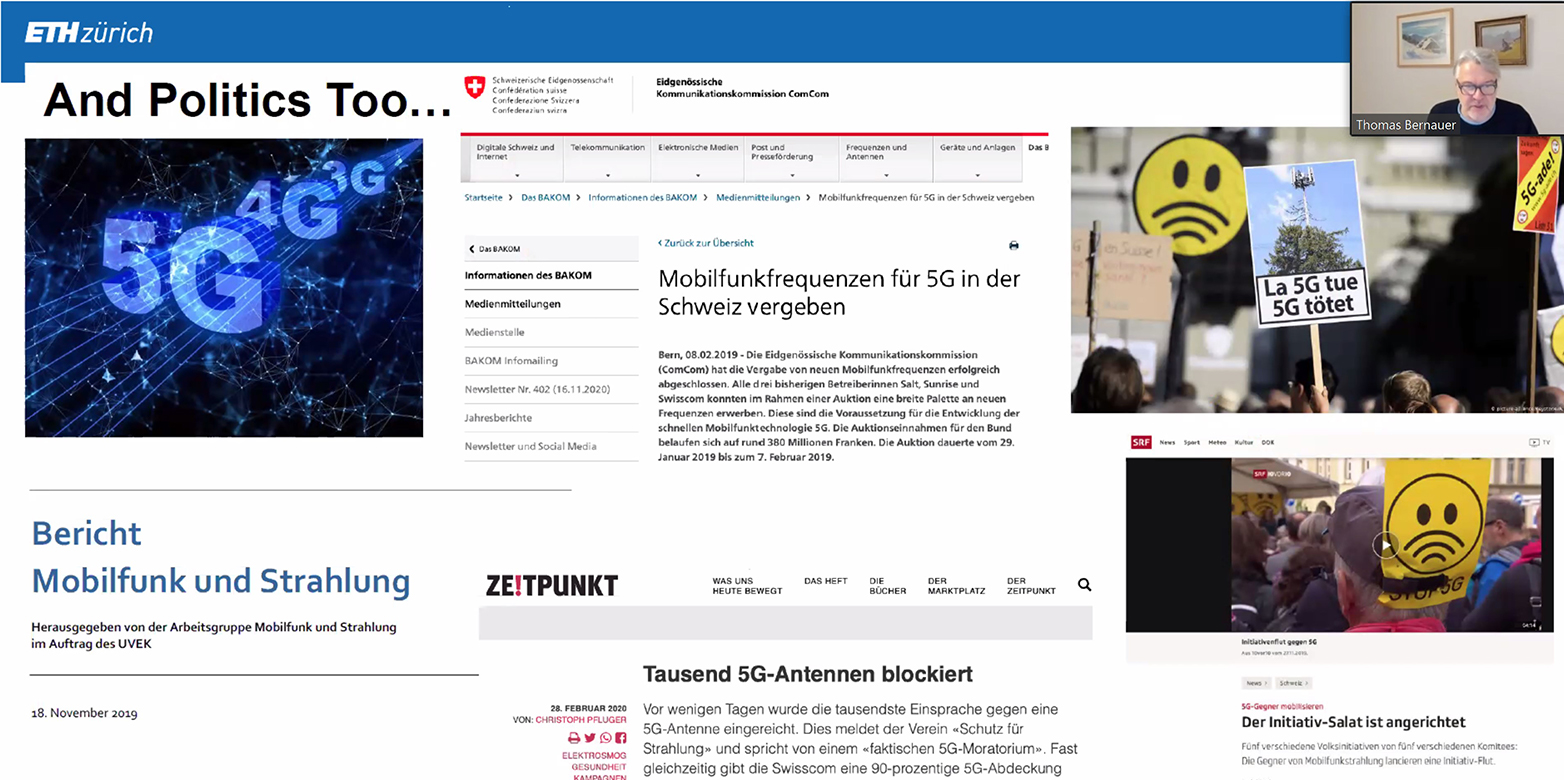Public Attitudes and Policy Preferences Concerning 5G: Results from the Swiss Environmental Panel
5G is the fifth-generation technology of mobile internet connection, which provides much faster data transmission speed. Public opinion is divided on making a trade-off between its social benefits and health risks with better public policies. ISTP Director Prof. Thomas Bernauer, external page Dr. Lukas Rudolph, and Franziska Quoss from the Center for Comparative and International Studies of ETH Zurich introduced their latest research on Swiss residents' perception of this new technology. The latest Swiss Environmental Panel (SEP) dataset was analysed with multiple methods and confirmed the existence of a NIMBY (not in my backyard) effect with 5G.

by Qianwen He & David Metzger
Currently, 5G is largely available in Switzerland, with over 2,000 antennas nationally. This research aims to determine the public perception towards the deployment of 5G and how Swiss residents weigh its benefits and costs. Since September 2018, the Swiss Environmental Panel (SEP) has been conducted by their team with the Swiss Federal Environmental Agency's cooperation. Up to 10 000 individuals were randomly sampled with 7 Swiss regions stratified and completed a survey online or in the paper in each wave. The fifth SEP wave can help determine public awareness, concerns, policy preferences, and NIMBY affects about 5G.
The results showed that 96% of respondents had heard of 5G before. Over half of citizens have health concerns related to the electromagnetic radiation of 5G. Citizens responded that 5G brought more national benefits than personal advantages. Besides, females and French-speaking regions showed lower support for 5G.
The results of a conjoint experiment with policy options showed that citizens prefer a cautious approach for expanding 5G: they prefer more antennas with lower radiation, a slow roll-out with preliminary research on health risks, and many possibilities for objections. For households proximate to antennas, citizens prefer governmental insulation material provision to monetary compensation.
Using two methods, a small but significant NIMBY effect was found. A vignette experiment showed that citizens are more likely to oppose a 5G-mast if closer to their home but have no high willingness to pay for the opposition. In the second experiment, after knowing the position of nearby 5G-masts, the respondents showed greater concerns about the 5G expansion.
The fifth wave showed that Swiss citizens are divided on support for 5G. It showed further that citizens favor a cautious, slow rollout and dislike antennas to be placed in their vicinity.
There are interesting avenues of further research on this dataset that the researchers are considering – looking for more correlations besides gender and language, such as political, environmental, and demographic variables. It is yet to be discovered what is driving public opinion about 5G and the consequences of this research for policy-making and technology communication.
We want to warmly thank the speakers Dr. Lukas Rudolph, Franziska Quoss, and Prof. Thomas Bernauer, for allowing us to learn more about their research.